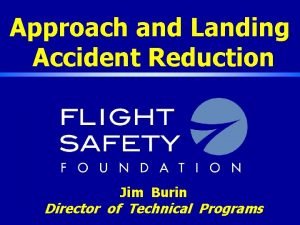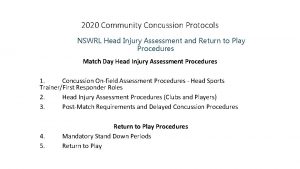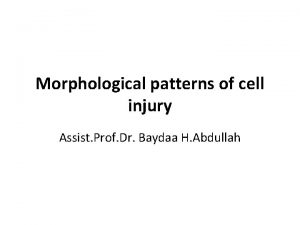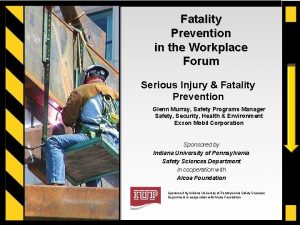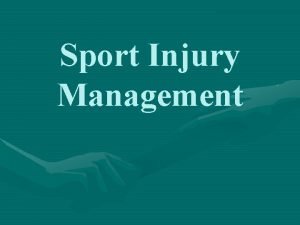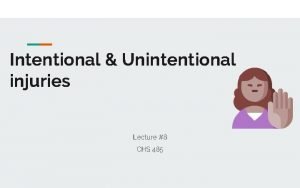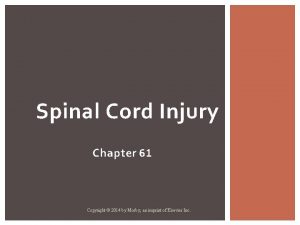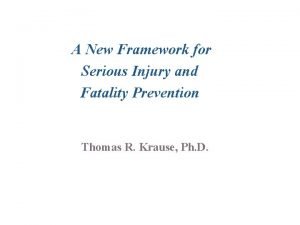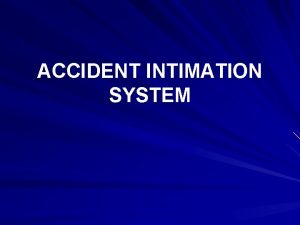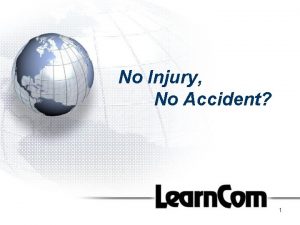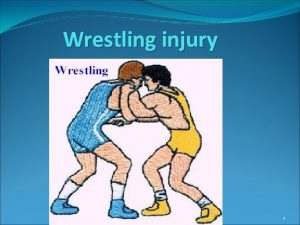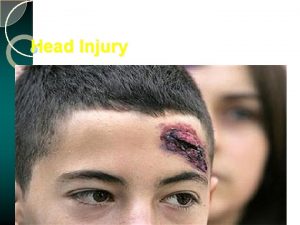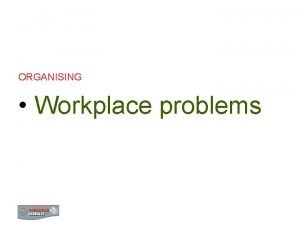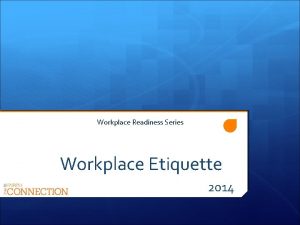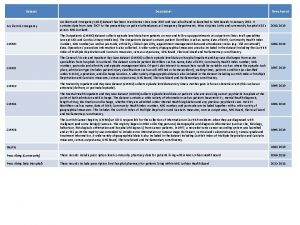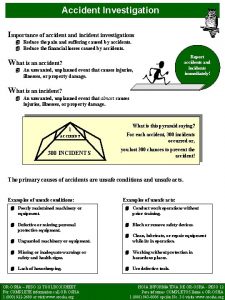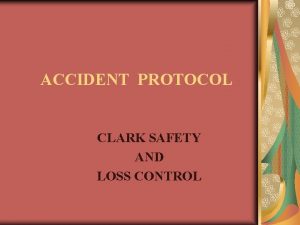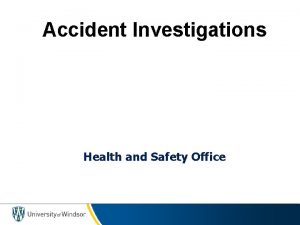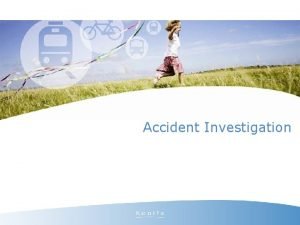AWAIR A Workplace Accident and Injury Reduction AWAIR













- Slides: 13

AWAIR A Workplace Accident and Injury Reduction (AWAIR) Program

A Workplace Accident and Injury Reduction (AWAIR) Program Ø An employer covered by this section must establish a written work place accident and injury reduction program that promotes safe and healthful working conditions and is based on clearly stated goals and objectives for meeting those goals.

Step One: Goals and objectives Goal: We will reduce our injury and illness rate by 15 percent by 2012, using 2011 as the baseline. Objectives: We will address all employee safety issues in a timely manner.

Step Two: Roles and responsibilities Some examples of assigned responsibilities are: A. For everyone in the organization – Ø All employees, including supervisors and managers, must follow all safety rules at all times. B. For employees – Ø Employees must promptly report any safety and health hazards they observe to their supervisor or safety committee representative.

Step Two: Roles and responsibilities C. For supervisors – Ø Supervisors must discuss any current safety issues with their employees at the beginning of all regularly scheduled staff meetings. D. For safety directors – The safety director will serve as the lead person in the organization for safety and health issues and will also serve as chairperson of the safety committee.

Step Two: Roles and responsibilities E. For safety committees – The safety committee will conduct monthly meetings and area inspections to review accident reports, identify hazards and address any and all safety concerns raised by employees, first-line supervision or the safety director. F. For management – Management shall review all safety concerns brought forward by the safety director, the safety committee or first-line supervision and take appropriate action.

Safety Committee: OSHA INSPECTION 2/2/2010 Clearwater County: Ø DOES THE COUNTY HAVE A FUNCTIONAL SAFETY COMMITTEE? Ø HOW OFTEN DOES THE COMMITTEE MEET? Ø IS THE SAFETY COMMITTEE REPRESENTED EQUALLY WITH MANAGEMENT AND EMPLOYEES? Ø DOES EVERY ONE FEEL COMFORTABLE ADDRESSING THE SAFETY COMMITTEE DIRECTLY WITHOUT FEAR OF RETALIATION OR REPERCUSSION?

Safety Committee Ø ARE CONCERNS READILY ADDRESSED? Ø ARE YOU GIVEN ANNUAL AWAIR TRAINING? Ø HAVE YOU HAD BLOOD BORNE PATHOGEN TRAINING? Ø DO YOU HAVE EMERGENCY PREPAREDNESS TRAINING? I. e. FIRE OR TORNADO DRILLS?

Step Three: Hazard identification, analysis and control Ø One of the more common tools used for hazard identification are checklists. Ø Another method often used to identify workplace hazards is job hazard analysis (JHA), Ø Initial hazard assessments should be performed prior to the introduction of new raw materials, equipment or processes to the workplace.

Step Three: Hazard identification Ø This is a good place to identify Ergonomic Issues! After hazards are identified, they should be eliminated or abated to the degree that it is feasible.

Step Four: Communication Ø A written safety and health program is just words on paper if management and employees are not aware of it and don't understand it.

Step Five: Accident investigation is a key component of a safety and health program. The goal of an accident investigation should be hazard identification and prevention. It should not be to affix blame. Investigators need to ask questions, such as: Who was involved in the event? Who witnessed the event? What happened? What was abnormal or different before the accident occurred? When did each event in the incident occur? Where did the hazard first occur? How and why did an event take place?

Step Six: Enforcement of safety and health programs Ø If workplace rules are not enforced, they cease to have meaning.
 Awair training
Awair training Intentional injury
Intentional injury Approach and landing accident reduction
Approach and landing accident reduction Injury prevention, safety and first aid
Injury prevention, safety and first aid The sad persons scale
The sad persons scale A spill at parsenn bowl: knee injury and recovery
A spill at parsenn bowl: knee injury and recovery Nrl head injury recognition and referral form
Nrl head injury recognition and referral form Cell injury and inflammation
Cell injury and inflammation Intracellular accumulation
Intracellular accumulation Serious injury and fatality prevention
Serious injury and fatality prevention Safety practices and sports injury management pictures
Safety practices and sports injury management pictures Unintentional injury examples
Unintentional injury examples Somi brace
Somi brace Serious injury and fatality prevention
Serious injury and fatality prevention


